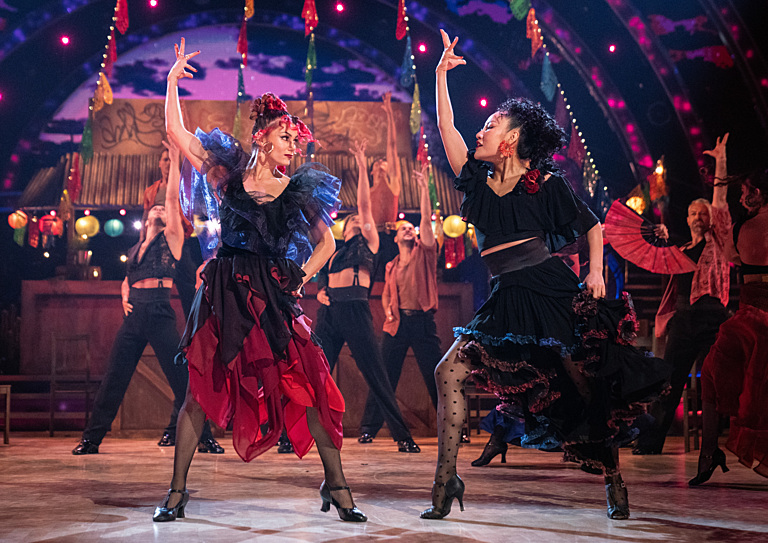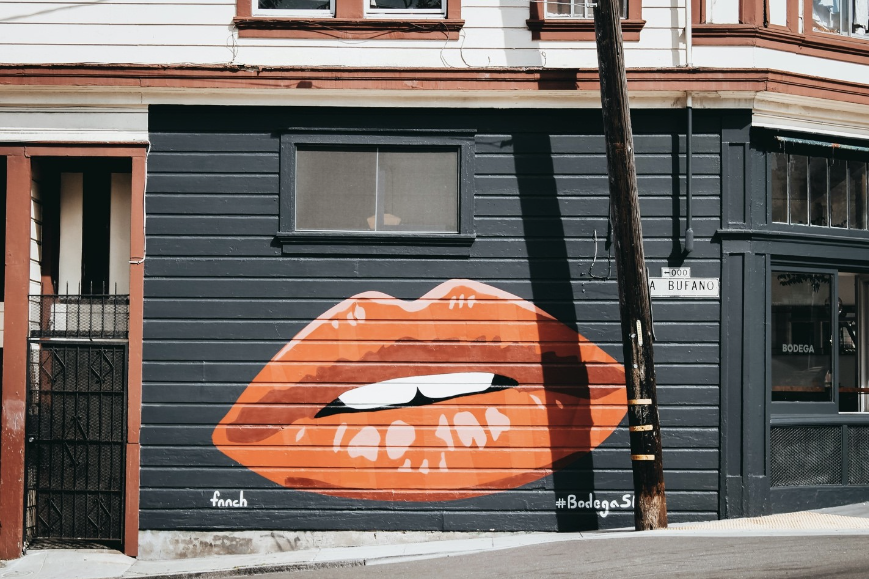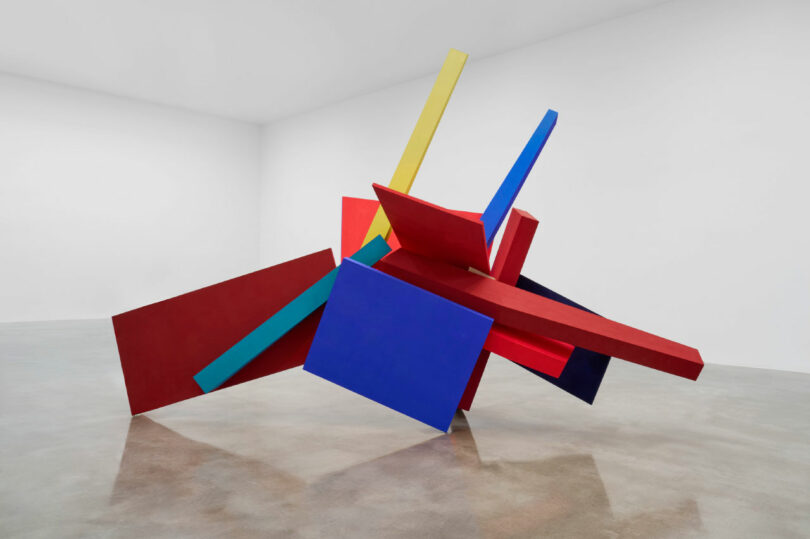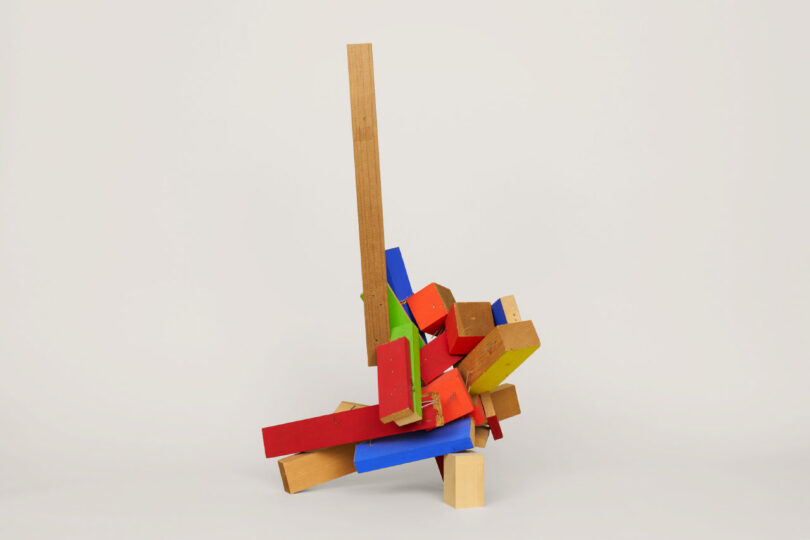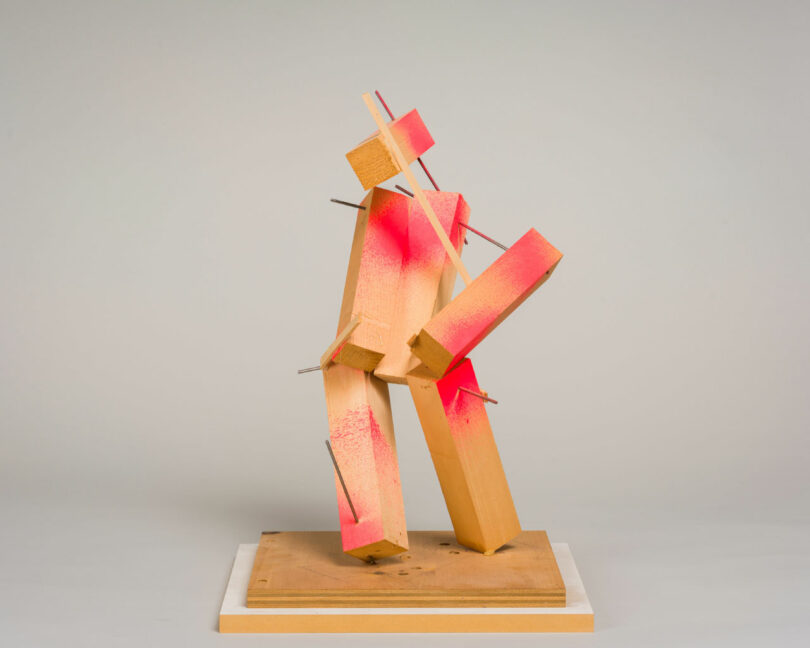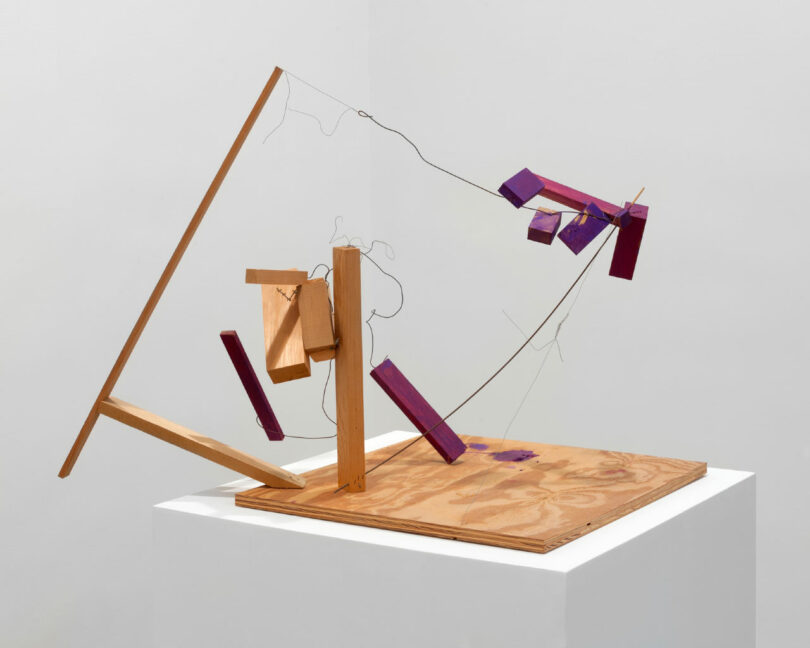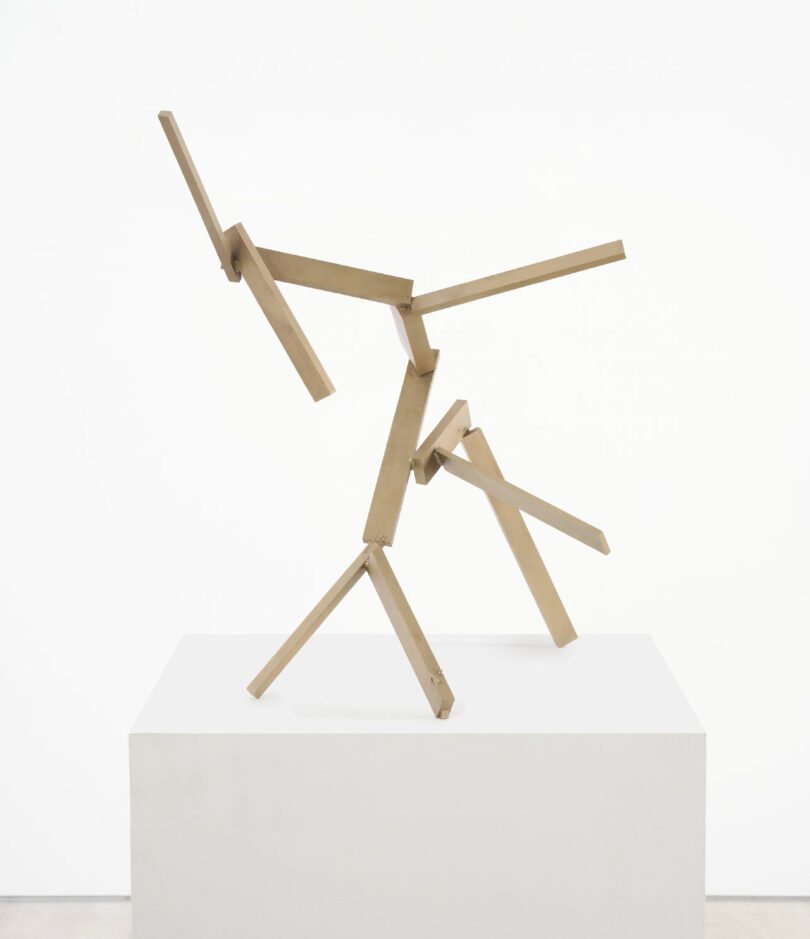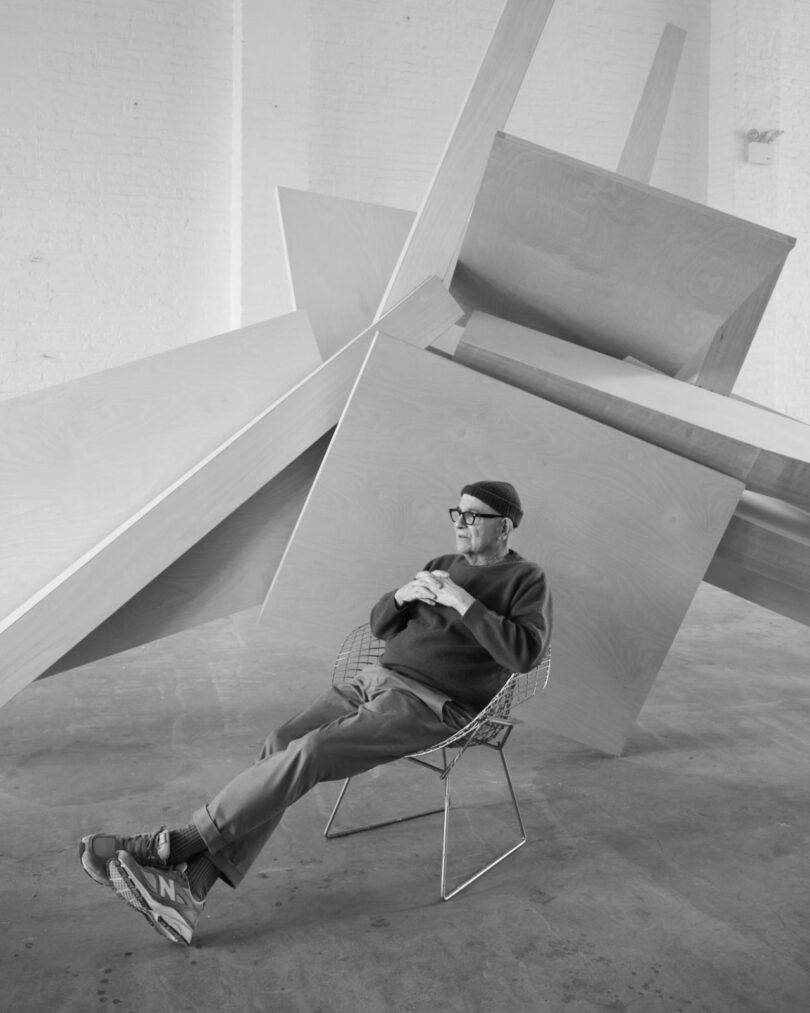Composer Max Richter: ‘I’m a low-key raver! I love all kinds of music’ | Classical music
[ad_1]
Born in 1966 in Lower Saxony and brought up in Bedford, Max Richter is an award-winning classical composer. Working across live performance, film, dance, art and fashion, he has released nine solo albums, including 2015’s Sleep, an eight-and-a-half-hour work based on the neuroscience of sleeping; 2020’s Voices, inspired by the Universal Declaration of Human Rights; and In a Landscape, released last month. A new ballet, MaddAddam, a collaboration between Richter and choreographer Wayne McGregor, with Margaret Atwood as a creative consultant, opens at the Royal Opera House on 14 November.
You’ve got a busy autumn ahead. Tell us about In a Landscape first – a more intimate, personal album for you.
It is. It’s an album about polarities, which are all around us in the world, and how we can reconcile them. We live in a time where one of the biggest challenges is that people who have different opinions basically can’t talk to one another any more. This record is a small appeal to try to harmonise these differences, by working with materials that we might think of as in opposition – found sounds and composed music, the human world and the natural world – trying to put these things together in a fruitful relationship.
What extremes do you come across in your day-to-day life?
So much of our media consumption now is driven algorithmically, which is very difficult to avoid. Algorithms are essentially driven by cortisol and dopamine spikes. You know, the more rage, the more clicks. Plus the online space is essentially an advertising space, so this dynamic is everywhere. We’re all surfing on this wave that is mediated by extreme emotions.
How do we resist that?
Everyone needs to develop their own strategies, whether that’s taking time out using systems to mute various apps, or leaving your phone at home, or changing your habits. It’s particularly challenging for parents whose kids have grown up with this environment all around them, where DM-ing one another on a platform is the norm. You’ve just got to encourage the idea that every interaction doesn’t have to be online.
Sleep was your “personal lullaby for a frenetic world – a manifesto for a slower pace of existence”. It’s now the most streamed classical music album of all time. How does streaming sit with you as an artist?
Sleep is 10 years old next year, unbelievably, so we’re going to play some more concerts around it, and doing the concerts is great. As for streaming, the fact that people can explore the musical universe simply by following their affections and curiosity is amazing. As a kid, if I wanted to hear a piece of music I didn’t know, I had to take a risk – make that bus trip, go either to the record library or the shop. Now, of course, it’s just a click. But the economics of streaming are very problematic. It’s put huge pressure on artists in terms of making a living.
You’ve talked before about loving musicians such as techno DJ Jeff Mills and Radiohead’s Jonny Greenwood working in the classical field. Who else should we listen to?
Sufjan Stevens’s Reflections [from 2023], ballet music written for two pianos, played by Timo Andres and Conor Hanick, is absolutely beautiful. Then again, he’s always been a really interesting artist. [Caribbean-Belgian jazz musician] Nala Sinephro’s new album is great too. She was an artist in residence at our studio a little while ago, so it was brilliant to hear the record she’s made.
You’re also a fan of Chic and played with the Future Sound of London. Are you a secret raver?
I’m a low-key raver! You know, I got into composing music because I love all kinds of music. With Chic, there are so many things about their work that I love. A lot of their songs sound like mantras, full of a rhythmic sort of repetitiveness, which really ties into systems music for me [like the work of Steve Reich and Philip Glass]. It’s also amazingly well played and produced.
I also understand you love Eurovision. Why?
It’s just a perfect evening of craziness, isn’t it? You suspend all notions of genre and taste and it all just kind of… happens. I genuinely love it. It’s multidimensional – you get to experience all sorts of national identities through the music, and ideas of what’s cool in different places, which can be hilarious.
What’s your favourite Eurovision song of all time?
[Abba’s] Waterloo, obviously. It’s a towering masterpiece. Recently, I’m more struck by the staging, like the man playing the grand piano on fire [in the Austrian entry in 2015], plus the guy in that ginormous hamster wheel [in Ukraine’s 2014 entry, Tick-Tock] was a bit of a classic.
What’s it like working with Margaret Atwood?
She was fairly hands-off because we were working with a text that had already existed [her 2013 novel of the same name], but we did have breakfast together, where she told us lots of things about how it was going to be. After that, she basically left Wayne and me alone. We were passing ideas back and forth the whole time – what about this? And what about that? Sometimes it lands very fast, sometimes it takes a bit of time. It’s like ping pong.
Can music have a political impact?
It depends on what we mean by politics. Or let me put it this way: I think music can sort of shift our state of mind, to take us into another mental space separate from the world of the day-to-day. It also gives us evidence about how someone else felt – what it felt like to be them – which is one of the most important things in the social and political sphere. Experiencing somebody else’s perspective, and what feelings might be behind that, is really valuable.
-
MaddAddam is at the Royal Opera House, London WC2, 14-30 November
[ad_2]
Source link
🪩Here Are Your Strictly Come Dancing 2024 Week 5 Results 🪩
[ad_1]
Paul Merson is the fourth celebrity to depart the dancefloor in Strictly Come Dancing 2024








Paul Merson and Karen Hauer have left Strictly Come Dancing following a dance off against JB Gill and Amy Dowden MBE during the fourth results show of the series.

Both couples performed their routines again; Paul and his partner Karen performed their Samba to Car Wash by Rose Royce. Then, JB and his partner Amy performed their Jive to Hey Ya! by Outkast.
After both couples had danced for a second time, the judges delivered their verdicts:
· Craig Revel Horwood chose to save JB and Amy.
· Motsi Mabuse chose to save JB and Amy.
· Anton Du Beke chose to save JB and Amy.
With three votes in favour of JB and Amy, they won the majority vote meaning that Paul and Karen would be leaving the competition. Head Judge Shirley Ballas also agreed and said she would have decided to save JB and Amy.

When asked by Tess about their time on the show, Paul said: “It’s been really good. For anybody I talk to, I would say you’ve got to go on this show. It’s amazing – everybody. There’s a Tottenham fan over there called Lincoln and even he’s nice! It’s been amazing, honestly, amazing. I loved every minute of it, I’ve had a great teacher.
“She’s been amazing, absolutely amazing and I couldn’t wish for a better coach. I’ve loved every minute of it. I can dance now – I’ve won because I can dance, I couldn’t dance before and I can half dance now. It’s a bonus, absolute bonus.”
Karen said: “Absolutely, you’ve been a joy. I’ve never giggled this much. My abs are really tight now. I am so proud of you. Every week you have showed up, you have improved. You’re what Strictly is about and I want to thank you for bringing such joy and just showing everyone that it is possible with a little bit of work and lots of giggles.”

Sunday’s results show also features a routine from our fabulous professional dancers, as Nancy Xu and Dianne Buswell take centre stage in a passionate Paso Doble. Choreographed by Oti Mabuse, the number is set at a cantina in the heat of an arid highway somewhere in the Southern states to Don’t Let Me Be Misunderstood by Santa Esmeralda. Plus a show stopping musical performance from Sophie Ellis-Bextor singing her new single Freedom Of The Night.

The remaining 11 couples will take to the dancefloor next week in a spook-tacular Halloween Special when Strictly Come Dancing returns on Saturday 26th October at 18:25 with the results show on Sunday 27th October at 19:20 on BBC One and iPlayer. Both of this weekend’s episodes are available to watch now via BBC iPlayer.
Paul and Karen will be joining Fleur East for their first exclusive televised interview live on Strictly: It Takes Two on Monday 21st October at 18:30 on BBC Two and BBC iPlayer.

Don’t miss a Strictly sequin by clicking on the image below :

[ad_2]
Source link
Christine Macel out as Musée des Arts Décoratifs director
[ad_1]
Christine Macel has stepped down as director of the Musée des Arts Décoratifs in Paris. Having taken up the role two years ago, she told the Art Newspaper earlier this week that she was taking a role advising the museum’s chairman, Johannes Huth – a newly created post – until her contract ends in October 2025. She said that it was a ‘relief’ to be leaving her post, ‘as the situation had become untenable in what an audit has described as a ‘crisis of governance and organisation’. The museum had commissioned an external audit after a medical expert warned about staff mental health amid several complaints and departures. Macel stepped down two days after the report was published. Before joining the Musée des Arts Décoratifs, Macel worked at the Centre Pompidou for more than 20 years, and curated the 2017 Venice Biennale. Her background in contemporary art made her an unusual choice for the directorship in the eyes of some commentators. Bénédicte Gady, who has been chief curator of graphic arts at the museum for six years, will be interim director for the next nine months.
The National Gallery in London has banned visitors from bringing liquids into the building, reports the BBC. Effective from Friday 18 October, the ban comes after a series of protest actions by Just Stop Oil – five since July 2022 – at the museum. Last week, the UK’s leading museum directors wrote an open letter calling for attacks on artworks to stop. In response, Just Stop Oil and Youth Demand – two of whose supporters targeted Picasso’s Motherhood at the National Gallery last week – published an open letter asking for a meeting with management. Baby formula, expressed milk and prescription medicines are exempt from the ban.
The art advisor Lisa Schiff has pleaded guilty to stealing $6.5m from her clients. The US Department of Justice found that between 2018 and 2023 Schiff defrauded at least 12 clients, an artist, an artist’s estate and a gallery ‘to fund a lavish lifestyle’; the transactions in question involve some 55 artworks. Through her art advisory company, SFA Advisory, Schiff is alleged to have diverted the funds of clients to pay personal and business expenses, and did not disclose sales to clients when she sold work on their behalf, the Art Newspaper reports. ‘Lisa Schiff attempted to paint a picture of a successful fine-art advisory business, when in reality – as she admitted today – it was actually a multimillion-dollar fraudulent scheme,’ James E. Dennehy of the FBI said in a statement. Schiff shut down SFA Advisory in May 2023 and declared bankruptcy in January. She will be sentenced in January 2025. The maximum sentence for wire fraud is 20 years.
The Metropolitan Museum of Art has returned a looted 5th-century Greek cup to Italian ownership. Earlier this week the New York Times reported that the drinking cup (kylix), was one of two vessels that arrived at the museum in fragments over a period of 15 years, beginning in 1978. In 2022, investigators at the Manhattan District Attorney’s office claimed that one of the vessels had been looted and deliberately broken up before being gifted and sold to the Met by a group of people associated with the trafficking of looted antiquities. The Manhattan DA’s office seized the kylix and repatriated it to Italy later that year. It has now emerged that in December 2023, the Met transferred the title of ownership of the other kylix to Italy, though the Italian authorities have agreed that the museum can continue to display it. Ann Bailis, a spokesperson for the Met, said that the DA’s office had ‘provided the Met with new information that made it clear the work should be returned’.
Darren Walker, currently president of the Ford Foundation, will be the next president of the National Gallery of Art (NGA) in Washington, D.C. In July, Walker announced that he would be stepping down as president of the Ford Foundation in December 2025; during his 11-year tenure to date he has overseen $7bn in grants. He has served on the board of the NGA for five years, during which time he established an acquisitions programme funded by the Ford Foundation. Walker will replace Mitchell Rales, who has been president since 2019 and will remain on the board.
[ad_2]
Source link
Legal Considerations for Murals and Public Art
[ad_1]
Murals and public art can significantly enhance an urban landscape, making art accessible to the entire community as well as serving as markers of community identity. But the creation and installation of these works of art comes with a complex web of legal considerations. Artists, property owners, and local governments must navigate the myriad legal issues and concerns applicable to public art projects. This article outlines some of the key legal considerations relevant to murals and other public art.
-
Copyright Ownership and Permission
One of the fundamental legal questions in public art is ownership. The first step in any public art project is to secure the rights to the wall or other space where the work will be placed and displayed. Before work begins, the artist or sponsoring organization and the owner of the property on which the art will reside must enter into a written agreement providing explicit permission to use the property for public art, among other issues, including:
- Any maintenance and repair obligations,
- Ownership of the work of public art (typically held by the property owner),
- Ownership of the underlying intellectual property (typically retained by the artist),
- Plans for what happens if the physical location or building is sold (does the agreement run to the new owner, effectively acting as an easement on the property?),
- Consideration of whether the property owner can alter or destroy the work,
- The specifications of the work of public art, including size, medium, and any content restrictions (i.e., no religious content, no sexual content, etc.),
- Agreement on how long the work will stay up, and
- The dates and times set for installation of the work, among other issues.
-
Photo by Mohan Nannapaneni from Pexels Moral Rights
Artists in some jurisdictions throughout the world have robust moral rights, which protect the artist’s personal and reputational interests in their work. In the U.S., though, moral rights are somewhat limited. However, in addition to copyright, thanks to the Visual Artists Rights Act (“VARA”) and common law, when it comes to public art, artists do have strong moral rights. These rights typically include:
- Attribution: The right to be recognized as the creator of the work.
- Integrity: The right to object to any derogatory treatment of the work, including destruction or mutilation.
Artists should be aware of their moral rights and negotiate their inclusion in licensing agreements when working on public art projects, with specific reference to VARA.
-
Zoning and Permitting
Public art installations may require compliance with local zoning laws and permitting processes. Many municipalities have specific regulations governing public art, which may include:
- Permits: Some cities require artists and property owners to obtain permits before installing murals or other public art. This process may involve submitting designs for approval to ensure they align with community standards.
- Zoning restrictions: Local zoning laws may dictate where murals or other public art can be located, particularly in historic districts or residential areas.
- Content restrictions: Different local rules may apply depending on whether the public work touts a business or brand or if the work is purely artistic.
Artists and property owners should consult local government websites or offices to understand the necessary permits and zoning regulations before starting a project.
-
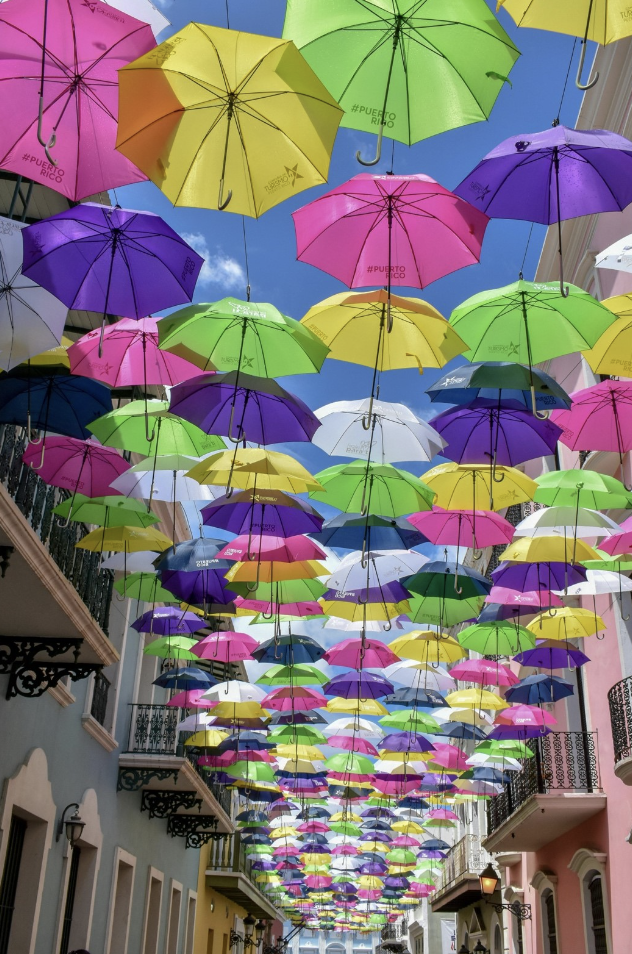
Photo by Nilda Guzman from Pexels Funding and Sponsorship
Many public art projects are funded through grants, sponsorships, or crowdfunding. Each funding source may come with its own legal considerations:
-
Grant Requirements
When applying for grants, artists must adhere to specific guidelines that may include:
- Reporting requirements: Grantors often require detailed reports on the project’s progress and outcomes.
- Intellectual property rights: Some grants may stipulate ownership of the final work or require the grantee to license the work back to the grantor for promotional purposes.
-
Sponsorship Agreements
If a business sponsors a mural, a formal sponsorship agreement is highly recommended. This document should outline the expectations of both parties, including:
- Financial contributions: Clearly state the funding provided.
- Branding and promotion: Specify how the sponsor’s brand will be represented, if at all.
-
Community Engagement and Controversy
Public art is inherently a community endeavor, and engaging with local stakeholders is crucial. However, it also opens the door to potential controversies, especially if the artwork addresses sensitive social or political issues. Be prepared to engage on these matters. Art is subjective and is unlikely to please everyone.
-

Image courtesy of Canva Community Input
Some cities require public input for art projects, particularly those funded by taxpayer money. This process may involve public meetings or other processes providing public input. Failure to engage the community may lead to backlash, vandalism, or legal challenges.
-
Controversial Works
Artists must consider the potential for controversy. While artistic expression is protected under the First Amendment, local governments may have the authority to remove or cover works that are deemed offensive or inappropriate. Artists should discuss potential content sensitivities with stakeholders to minimize the risk of backlash.
-
Vandalism and Maintenance
Public art is often exposed to the elements and potential vandalism. Legal considerations regarding maintenance and restoration can arise and should be addressed in the agreement between the artist and the property owner.
-
Liability Issues
Property owners and artists should clarify liability responsibilities in their agreements. For example, if a mural is vandalized, who bears the cost of repair? Who is liable if an individual brings a right of publicity claim because they are depicted in a mural with an arguably commercial message without their consent? These details should be explicitly outlined in the agreement between the artist and property owner to prevent potential misunderstandings.
-
Preservation Laws
Some public artworks may fall under preservation laws, especially if they are deemed historically or culturally significant. Artists and property owners should be aware of any legal protections that may impact maintenance, restoration, and removal of the work.
-
Insurance and Liability
Artists and property owners should consider obtaining insurance to protect against potential liability associated with public art projects. This may include:
- General liability insurance, which covers injury or damage that occurs as a result of the art installation.
- Property insurance, which protects against damage to the mural or public art itself.
-
Indemnification Clauses
In contracts, indemnification clauses can protect one party from liability resulting from the actions of another. For instance, if the artist’s work leads to damage or injury, the property owner may seek indemnification from the artist. Indemnification provisions must be carefully considered.

Conclusion
Murals and other public art offer significant benefits to communities, but also come with a range of legal considerations. From ownership and copyright to government permitting and community engagement, artists, property owners, and other stakeholders must navigate these complexities carefully. By understanding and addressing these various legal issues, public art can thrive and be a significant source of community pride.
________________________
Authors bio:
Co-founders of intellectual property law firm Crown® LLP, Elizabeth J. Rest and Owen Seitel have a passion for Advising Creativity®. Elizabeth is a brand builder and portfolio protector, focused on trademarks and copyrights, and Owen has more than 30 years of experience with commercial endeavors, transactions, and disputes involving intellectual property and broader business matters. They can be reached at [email protected] and [email protected].
[ad_2]
Source link
Certain Days Needs Your Art!
Our friends at Certain Days, who have been producing an amazing calendar with—and as a benefit for—political prisoners for 23 years (!) are collecting art and writing for their 2025...
Read MoreJoel Shapiro’s New Sculptures Radiate Joy and Defy Gravity
[ad_1]
My favorite Joel Shapiro sculpture is in the collection of The Metropolitan Museum of Art – an orange dancer-like structure that has made me smile since the first day I arrived in New York, now 23 year ago. That sculpture, like most of his work for the last 50+ years is radiantly joyful, defies gravity, and seems to move as you walk around it.
Joel Shapiro: Out of the Blue. 510 West 25th Street, New York, NY 10016 September 13 – October 26, 2024 Photo: Courtesy Pace Gallery
His current exhibition at Pace in New York, Joel Shapiro: Out of the Blue, is everything you want from a Shapiro with with new surprises. Presenting his largest wood sculpture to date, along with a dozen small studies and bronzes, it’s a playfully intelligent experience with color, space, material, and movement that keeps you circling.

Joel Shapiro: Out of the Blue. 510 West 25th Street, New York, NY 10016 September 13 – October 26, 2024 Photo: Courtesy Pace Gallery
The exhibition spans two rooms with generous space to experience all 360 degrees of each work. Debuting here are three new massive wood sculptures – each taller than any viewer. The central work, titled “ARK” (titles are rare for Shapiro who has long-preferred the “untitled”) is also the largest in the room, reaching nearly 12 feet tall. The structure feels like someone paused an implosion in space – as geometric shapes seem like they ignore our own gravity as they find their own central magnetism.
The three new works are an interesting shift from the two exhibitions of sculpture he presented in New York a decade ago (see them here: at Pace Gallery in 2010 and Paula Cooper Gallery in 2014) where he presented works suspended by a network of rope. Though it was undeniably thrilling to walk into the middle of a fully exploded Shapiro, the ropes also explained their “weightlessness.” However in this new work, and especially in ARK, the objection to gravity seems nearly impossible – it must be bound by physics, but it doesn’t look like it.
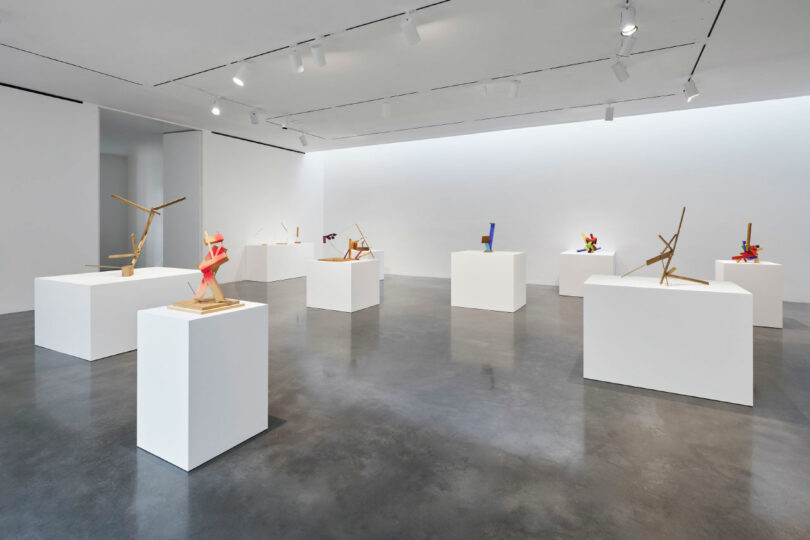
Joel Shapiro: Out of the Blue. 510 West 25th Street, New York, NY 10016 September 13 – October 26, 2024 Photo: Courtesy Pace Gallery
But the real treat is in the second room where a dozen small studies and bronzes pack nothing but gleeful wonder. My favorite works are the colorful wood structures that reveal their making with an abundance of visible nails, rods, or screws. It’s as if you’re witnessing the works’ creation, when Shapiro suspends an element in space and rapidly secures it with multiple shots from a pin gun.
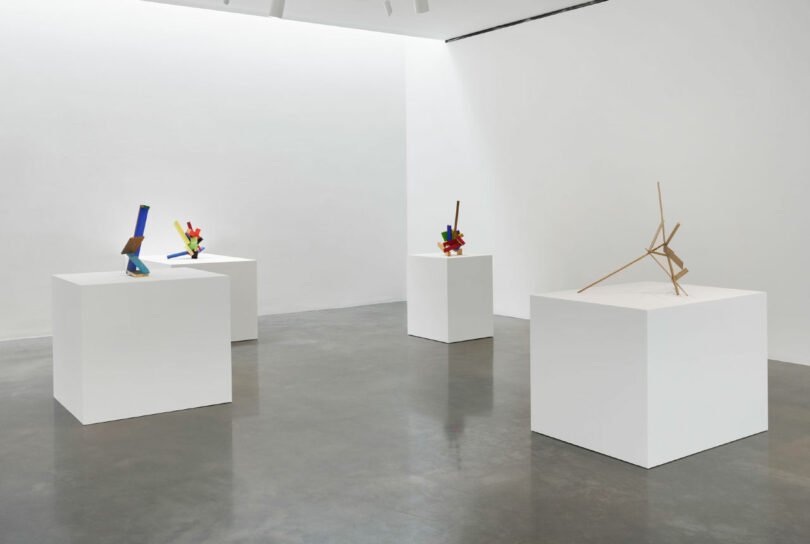
Joel Shapiro: Out of the Blue. 510 West 25th Street, New York, NY 10016 September 13 – October 26, 2024 Photo: Courtesy Pace Gallery
A stand out is “untitled (structural study for 20 Elements)” (below) – a study for the artist’s large-scale work of a similar title that was once shown in brilliant juxtaposition at the Musée d’Orsay. Again, the screws have a sense that they’re holding the pieces down rather than up, preventing elements from floating away.
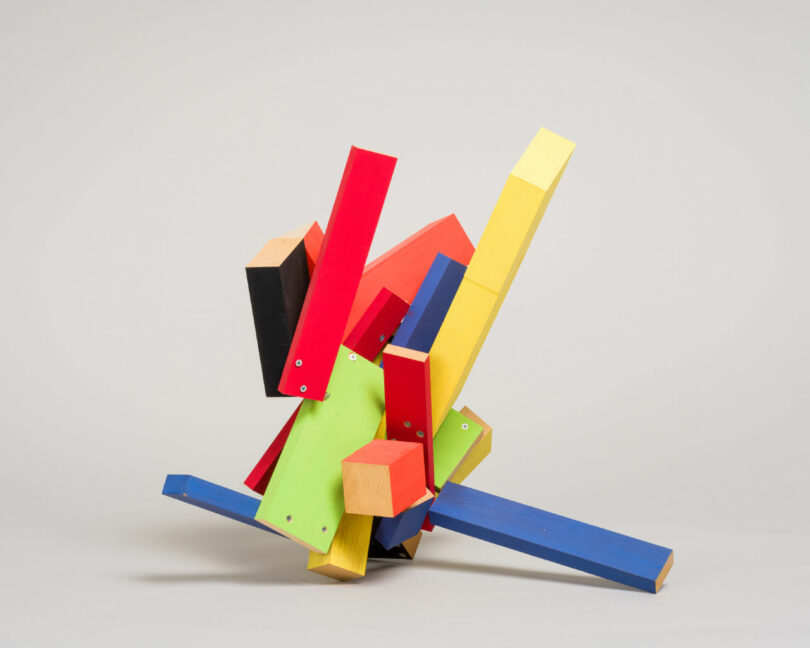
Joel Shapiro, untitled (structural study for 20 Elements), 2004-05. © Joel Shapiro Artists Rights Society (ARS), New York
The work is on view at Pace through October 26th, 2024 and well worth viewing from every possible angle. In the meantime, the gallery produced this exceptional 3-minute interview with Shapiro inside his Queens studio. Made last year on the occasion of his exhibition in Hong Kong, Shapiro talks about his process, color, and feelings about “perfection.”
[embed]https://www.youtube.com/watch?v=kBh2-5brC9w[/embed]
What: Joel Shapiro: Out of the Blue
Where: Pace Gallery, 510 W 25th St, New York, NY
When: September 13 – October 26, 2024
[ad_2]
Source link
An interview with Dominic Cummings
[ad_1]
By BAGEHOT
IN MY column this week I profile Dominic Cummings, a former government adviser who is now campaign director for Vote Leave, the largest of the groups vying to lead the Out campaign in Britian's upcoming referendum on the European Union (EU). Mr Cummings is blunt, energetic and clever; he infuriates some but inspires intense loyalty among colleagues; he wants Eurosceptic campaigners to fight the impending battle as insurgents against an establishment he considers overwhelmingly pro-European (already Vote Leave has sent protesters to heckle David Cameron at a speech to the CBI). With him at its helm, the Out campaign will be unlike anything British politics has seen before, predicts one close (though pro-EU) observer.
[ad_2]
Source link
John Leguizamo Has Written His First Play For More Than One Actor
Not to worry: it’s still about Hispanic Americans, and he’s still starring. “Not bragging on myself, but Molière wrote all his plays for himself and he was the lead in all his plays,” Leguizamo says. “So I’m fancying myself a little bit as a Latin Molière.” – The Washington Post (MSN)
[ad_2]
Source link
Grace Williams: Orchestral Works album review – vivid playing and striking drama | Classical music
[ad_1]
Born in Barry, south Wales, in 1906, Grace Williams was part of the same generation of British composers as Imogen Holst, Elizabeth Maconchy and Elisabeth Lutyens. She studied at the Royal College of Music in London with Vaughan Williams and later in Vienna with the Schoenberg pupil Egon Wellesz, and, as this vividly played collection of orchestral pieces from John Andrews and the BBC Philharmonic illustrates very well, those very different influences continued to coexist in Williams’ music. The disc includes what has become the most frequently performed of her works, the Sea Sketches for strings, five miniatures completed in 1944 in which the string writing recalls early Tippett and Britten. Castell Caernarfon is a prelude and processional composed for the investiture of the Prince of Wales in 1969, but it’s the strikingly dramatic four Ballads, from 1968, and especially the 1939 Four Illustrations for the Legend of Rhiannon, based on an episode from the Mabinogion, and in which Sibelius seems to be added to her personal stylistic mix, that show Williams at her most distinctive.
Allow content provided by a third party?
This article includes content hosted on embed.music.apple.com. We ask for your permission before anything is loaded, as the provider may be using cookies and other technologies. To view this content, click 'Allow and continue'.
Listen on Apple Music (above) or Spotify
[ad_2]
Source link
5 Artists Who Received Large Grants Share How Their Lives Changed—and How They Did Not
[ad_1]
Some of the largest financial awards a dance artist can win are the ones you can’t even apply for. You’re simply told one day that you’ve won, say, up to $550,000, in the case of the Doris Duke Artist Award, or $800,000, in the case of the MacArthur “genius grant.” And those two grants are almost entirely unrestricted, meaning that after paying taxes on the money, artists can do whatever they want with it, personal or artistic—buy a house, fund a new piece, pay off debts, grow their company.
The artists who win them are essentially well-deserved lottery winners. But are those windfalls as life-changing as they seem to be?
Not all grants are six figures, or come with no strings attached. But even a smaller award can feel like a jackpot considering the financial challenges that often come with being a dancer or choreographer. Five artists who’ve received major grants spoke about the opportunities those awards allowed them, and how they changed—or didn’t change—their life, work, and art.
Donald Byrd
2011: United States Artists Fellowship, $50,000
2016: James W. Ray Distinguished Artist Award, $50,000
2019: Doris Duke Artist Award, $275,000
By 2019, Donald Byrd had amassed so much debt from back taxes that he had decided “I’ll die, and then I won’t have to pay it,” he says. But then Byrd, who is now 75, received the Doris Duke Artist Award, and his relationship to money changed forever.
Byrd had received large grants before, which he had used to fund travel to broaden his aesthetic sensibilities and make work in other countries. But though much of the Duke award went toward fulfilling his delinquent tax responsibilities, the grant also came with a financial planner, and shifted his entire worldview. “I come from a generation of artists who expected to go to our graves poor, if we’re lucky, but probably poverty-stricken,” he says. “I used to have a lot of fear around money, and my emotions determined what I did in regards to money. I discovered that that does not necessarily have to be the case.”
Getting rid of his tax debt also allowed Byrd to free himself of what he calls the “Damocles’ sword” hanging over his head. “I felt liberated. I didn’t realize how much I was carrying around all those years with that,” he says. “I went through a phase where I was afraid to look at my mailbox. I was haunted by it. So dealing with that allowed me to be inside the world of the imagination more completely.”
Michelle Dorrance
2013: Jacob’s Pillow Dance Award, $25,000 unrestricted
2014: Herb Alpert Award in the Arts, $75,000
2015: MacArthur Fellowship, $625,000 over five years, unrestricted
2016: United States Artists Fellowship, $50,000
2017: Ford Foundation Art of Change Fellowship, $50,000
2018: Doris Duke Artist Award, $275,000
Before she received the MacArthur “genius grant” in 2015, tap dance choreographer Michelle Dorrance thought she was going to have to take a forced break from her company, Dorrance Dance. She was about to go bankrupt and had run out of credit cards to max out to fund the troupe.
That $625,000 award changed everything: Not only was Dorrance able to pay off her debts and invest in the infrastructure that would support her company for years to come, but she was given a new sense of purpose—and obligation. “Receiving that grant, it’s almost like I could never say no again for the rest of my life” she says. “I’ve been given this incredible thing, so how dare I not do ‘blank’?”

It wasn’t until her Doris Duke Artist Award in 2018 that Dorrance used any of her grant money to invest in her personal future. “It was the first grant I received where they make you responsible for setting up savings for yourself—it’s a requirement,” she says. “That was a turning point for me. It’s the only reason why I have any retirement savings.”
Dorrance also has some of her MacArthur funds still stashed away, but for a very specific purpose. “I put the last third of it in an investment account, in order to support a space that the tap community, and the larger percussive-dance community in New York City, can own,” she says. “I believe in the community ownership of it.”
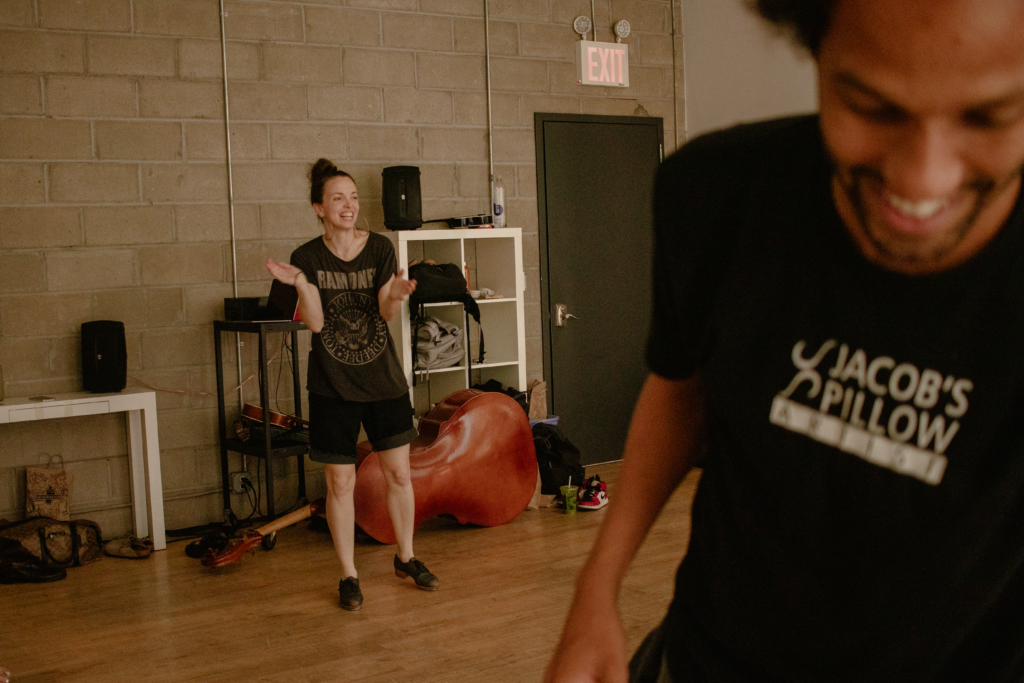
Miguel Gutierrez
2010: United States Artists Fellowship, $50,000
2010: Guggenheim Fellowship, $40,000
2010: Foundation for Contemporary Arts Grant, $25,000
2016: Doris Duke Artist Award, $275,000
In 2010, Miguel Gutierrez won three separate grants in a single year, totaling $115,000. He used the Guggenheim Fellowship towards the research and development of a new work, and the other two, the United States Artists Fellowship and the Foundation for Contemporary Arts Grant, to pay off his credit card and tax debt. By 2011, “I was back to having to do what I always do,” he says, “which is apply for things and see what I can put together.”
When he found out he’d won the Doris Duke Artist Award in 2016, the first word that came to mind was “future.” He put the money toward the purchase of his New York City apartment.

“That award made me think more intelligently about how to set myself up for success for the next chunk of my life,” he says. “That has led to other decisions that I’ve made about going back to school, and about getting a job.” (Gutierrez is now a tenured faculty member at UCLA.)
Gutierrez acknowledges that what he calls the “Santa Claus” system of artist grants isn’t perfect. “The lucky few get picked, and the unlucky many are wondering if their day will ever come,” he says. “It maintains a sense of inequity. There is still an essential issue here, which is the precarity of the field. So it’s a double-edged sword. But it’s a pretty nice sword.

Rosie Herrera
2016: United States Artists Fellowship, $50,000
2024: Knight Choreography Prize, $30,000 unrestricted, $20,000 in programmatic support
2024: Guggenheim Fellowship, $60,000
When Rosie Herrera was awarded the United States Artists Fellowship in 2016, many people told her to use the $50,000 to buy a house. But she didn’t. “That money went into making work, into paying dancers and collaborators, into rehearsal space,” she says. “I used it slowly over time in the most economical way possible. I really stretched that money.” She promised herself that the next time she won a big award, she’d spend it on herself.

Eight years later, Herrera won both the inaugural Knight Choreography Prize, from NCCAkron, and the Guggenheim Fellowship. But figuring out what, exactly, investing in herself looks like has been complicated. “I thought it would be so simple, but it’s turned out to be a provocation for me to think about my life,” she says. The fact that governor Ron DeSantis recently cut all state funding for the arts in Florida has further tested the Miami-based choreographer’s promise to herself. Though Herrera’s company doesn’t receive much funding from the state, “the creative partners we have producing and presenting work are really threatened,” she says. “It’s becoming increasingly precarious to make plans for the future.”
Still, Herrera appreciates the opportunity to make her artistic life more sustainable. “And, hopefully,” she says, “I can use that as a catalyst for more sustainable working models for my community that is really suffering right now.”

Annabelle Lopez Ochoa
2019: Jacob’s Pillow Dance Award, $25,000 unrestricted
Ballet choreographer Annabelle Lopez Ochoa admits that the $25,000 she was awarded in 2019 as part of the Jacob’s Pillow Dance Award was too small to be life-changing. But it did give her some freedom.
When creating a short work for The Washington Ballet, for example, one scenic element she wanted was beyond the company’s budget. So Ochoa decided to purchase the scenery herself, using part of her award money. Similarly, while working on a ballet about Coco Chanel for the Hong Kong Ballet, Ochoa used award funds for a research trip to Paris. The remaining money became a sort of safety net, allowing her to take low-paying but close-to-her-heart gigs in Colombia and the Dominican Republic.

Ochoa is the rare ballet choreographer to have received a substantial monetary award. This seems partially related to the fact that most ballet choreographers make work within the structures of large, relatively well-funded ballet companies, unlike artists in other genres who often make work for their own small companies, and who may prioritize paying their dancers over paying themselves.
But Ochoa says this grant changed her perspective on money, even when she’s working with those larger ballet companies. “It taught me how much a set costs, and everything you need to think about—it has to arrive here, it has to be stored there, you need a tech person to move it,” she says. When an artist does have a little financial wiggle room, she says, “it creates air in your imagination.”
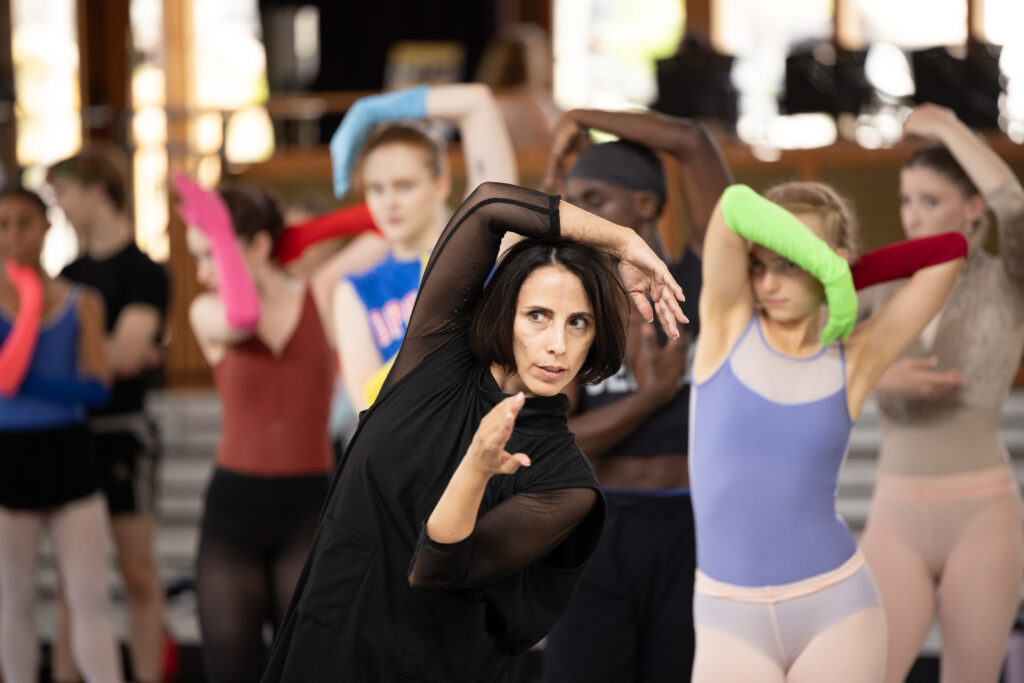
[ad_2]
Source link

